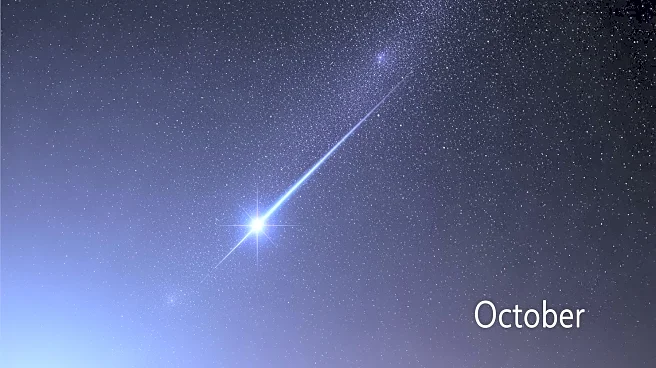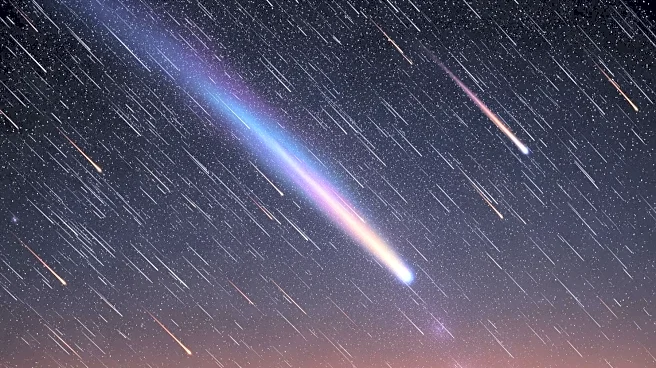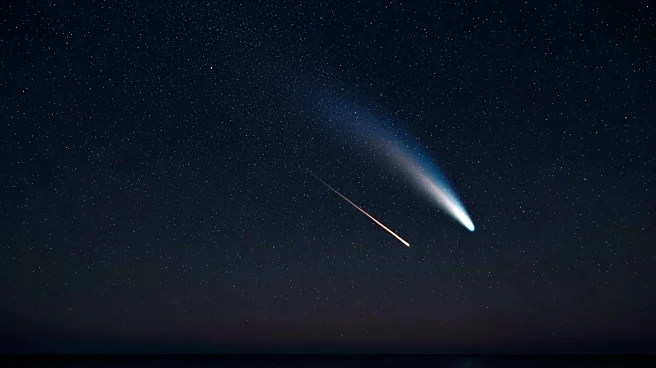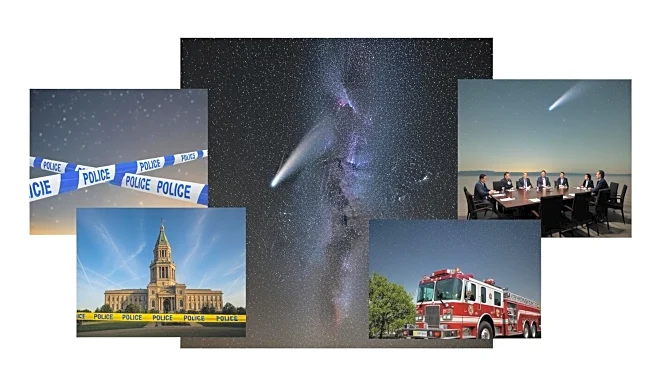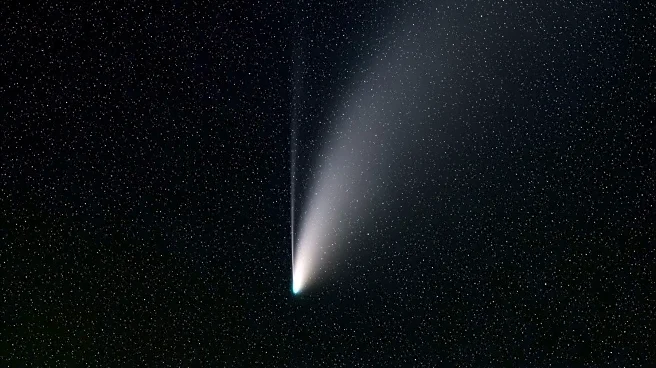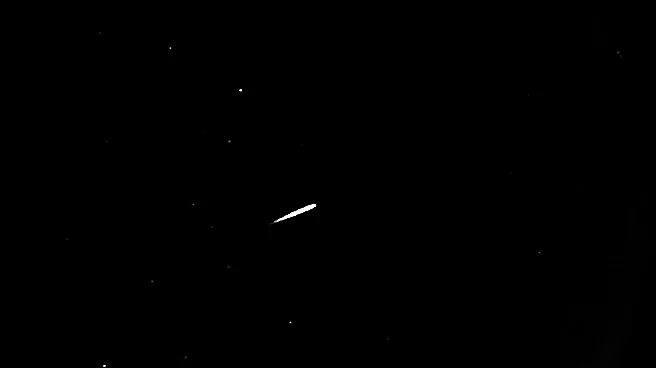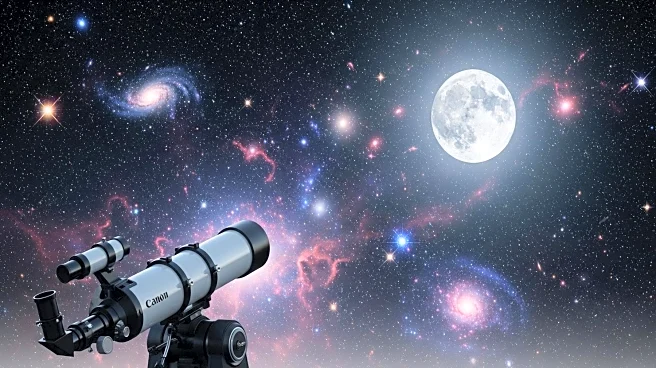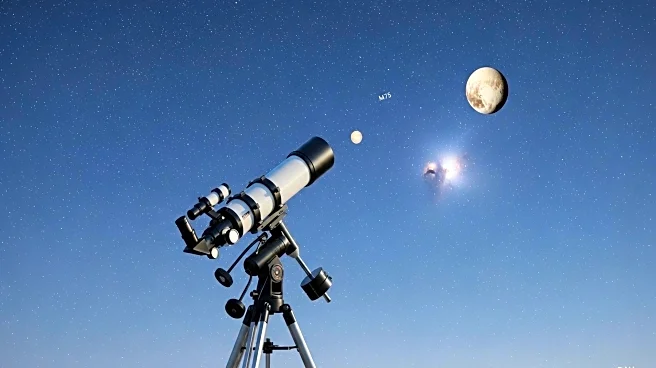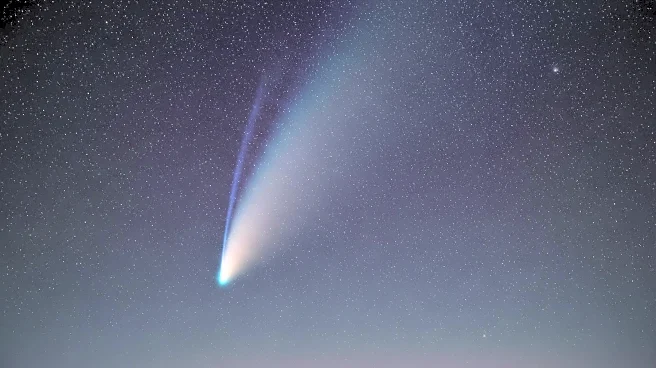What's Happening?
The Orionid meteor shower is set to peak on October 21, offering a spectacular display of meteors in the early morning hours. The shower's radiant is located near the constellation Orion, and observers
can expect to see up to 20 meteors per hour. In addition to the meteor shower, the week features several celestial events, including the closest approach of Comet C/2025 A6 (Lemmon) and opportunities to observe planets such as Mars, Mercury, and Uranus. The Moon will also pass close to several planets, providing excellent viewing opportunities for astronomy enthusiasts.
Why It's Important?
The Orionid meteor shower is an annual event that attracts skywatchers and astronomy enthusiasts. It provides an opportunity to observe meteors originating from Halley's Comet, offering insights into the composition and behavior of cometary debris. The additional celestial events, such as the close approach of Comet Lemmon and planetary alignments, enhance the viewing experience and offer educational opportunities for those interested in astronomy. These events highlight the dynamic nature of the night sky and the ongoing exploration of our solar system.
What's Next?
Observers are encouraged to find dark locations away from city lights to maximize their viewing experience during the Orionid meteor shower. The peak viewing time is in the early morning hours before sunrise. As the week progresses, skywatchers can continue to observe the movements of planets and other celestial objects, taking advantage of clear skies and favorable conditions. The events serve as a reminder of the importance of preserving dark skies for astronomical observations and the enjoyment of natural phenomena.
